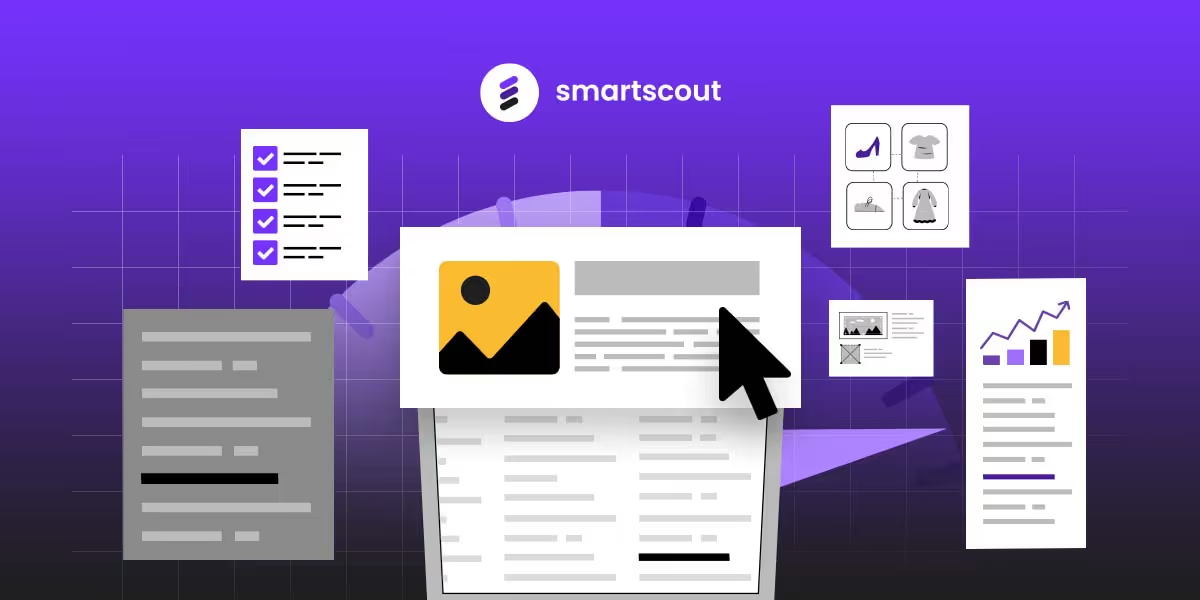So you found the perfect product to sell on Amazon, established a deal with a manufacturer, and have everything ready to start selling. BUT, your products aren’t getting any clicks. Even worse, your products are getting clicks, but nobody is buying.
You’re probably targeting the wrong audience, not using the correct keywords for your products, have a bidding budget that’s too low, or some other niche problem you need to fix. Good news is, you’re at the right place and this article is all about fixing your Amazon PPC optimizations, so you can get clicks and more sales.
We’ve already made an article for the fundamental of optimizing your PPC campaigns, so quickly check that out if you’re totally new to optimizing PPC campaigns.
More Than the Basics: Amazon PPC Optimization
Amazon’s PPC campaigns are a great way to get some brand visibility at the cost of an advertising fee. If done right, you can get products with zero views and make them viral, together with your shop and other related products from your PPC campaign.
The problem? There are a lot of technical nuances to setting up a PPC campaign and the differences can be as big as your advertising budget to as small as not adding a negative keyword.
Optimize product listing with relevant keywords
While relevant keywords are the most obvious thing to get right in your campaign, it’s also a lot more complicated than people give it credit for.
If you’re more general than necessary, you’ll blow up 30 percent of your advertising budget—or more—on customers who are never going to buy your products. If you’re too specific, you’ll miss the mark and end up on only one part of the market share.
Keywords are more complicated than getting the product listing title right. You also need the right keywords (alternate keywords) in the description and in the product bullets, so SERPs and Amazon can find your product for customers who aren’t searching for the exact keyphrase in your title.
Here are some of the different ways you can use keywords to optimize your PPC campaign:
- Keywords clusters: Finding the group of keywords that your original keyword belongs to and then as much of those related keywords into your PPC as possible (without keyword stuffing or ruining readability).
- Long-tail keywords: Using long keywords from hyper-specific searches to get the attention of customers who are already looking for a specific solution, hopefully your product.
- Audience keywords: You can use words that refer to your target audience to increase the chances of them reaching your product. E.g. skateboarders, outdoor enthusiasts, gymheads.
- Negative keywords: Typing down the kinds of keywords you DON’T WANT your PPC campaign to appear in does two things: it saves you money and the money you saved will go back to targeting the right audience.
NOTE: There is the option to use the auto campaign feature for Amazon PPC, this takes care of bidding and generating keywords for your ads. But, we don’t recommend running your advertising campaign this way if you don’t have the experience to run a PPC campaign manually. While it is easy to set up an auto PPC campaign for beginners, it’s going to cost you more money and more experience in the long run. All without learning anything about setting up a PPC campaign yourself anyway.
Structure your campaigns effectively
The best way to run any kind of advertising campaign is always through A/B testing.
This is when you run multiple campaigns with different variables and then see which campaign performs the best. While this is a popular concept already, a lot of beginners have a hard time effectively structuring their campaigns to not cannibalize each other while still targeting the relevant audience.
These are the common ways you can mess up your campaign structure:
- Overlapping keywords: Having campaigns with overlapping keywords will mean both campaigns fighting or bidding with each other to appear for those keyword searches. This is called “cannibalism” in the advertising industry. This is very common for PPC campaigns that target broad keywords or search terms.
- Neglecting negative keywords: If you don’t add negative keywords to your campaigns, there are still chances these campaigns will overlap for related or alternate keywords.
- Irrelevant campaign data: If you have 3 campaigns, and they’re all targeting different markets, keywords, and segments, you run the risk of getting data that’s unrelated to each other. Campaigns that are too far apart in ad groups makes it difficult to really analyze what is working and what isn’t. You can think of it like a jigsaw puzzle. With scattered campaigns, it’s like taking two jigsaw puzzles, putting them both in the same box, and trying to solve both puzzles at the same time.
A good campaign structure targets the right audience, figures out the best language to approach that audience, and ultimately helps you understand your target audience better.
If you don’t know how many campaigns to run or how to even approach A/B testing for your PPC campaigns, here are some good guidelines:
- New product: For a new product, it's best to start with a smaller number of campaigns (2-3) focused on different targeting strategies and keyword types. This allows you to gather data on what resonates with your target audience and identify the most effective keywords.
- Established product: With a proven product, you can run more campaigns (4-6 or even more) to explore various audience segments, different ad formats, and niche keyword opportunities.
To add to this, if you’re selling a simple product, then 2-3 campaigns focused on broad and specific keywords should be fine even if the product is already established. Unless you’re specifically looking to target customers OUTSIDE of your regular audience, testing different types of campaigns for a simple product is unnecessary. Now, if your product is complex with various features, then running multiple campaigns that target different aspects and buyer personas is the way to go.
- Limited budget: With a smaller budget, it's best to concentrate on 1-2 core campaigns and optimize them meticulously. Spreading your budget too thin across multiple campaigns will limit their effectiveness.
- Brand awareness: If your primary goal is brand awareness, you can run broad keyword campaigns with various ad formats to reach a wider audience.
- Conversions: If conversions are your main focus, targeted campaigns with relevant keywords and optimized bids will be more effective.
Set a high budget for the peak conversion times
A peak conversion time is the hour where most purchases are made to your product. The peak hours are specific to your product and the campaign, but the important thing to note is that if your advertising budget is used up while there are still Amazon users looking to buy, then you’re missing out on a sale.
We would like to note though that this strategy is sort of advanced. You’ll need to work with two campaigns, one targeting the peak conversion time and the other for non-peak times. So, if you aren’t familiar with this method, we strongly suggest that you look through tutorials first or get some advice. The high-budget for peak conversion times strategy will net you a lot of sales, but you’ll need a bigger advertising budget and a more active role in managing your campaigns.
Here’s the general step-by-step process of setting up this campaign strategy:
- Identify peak conversion times: Analyze your historical data to understand when conversions are highest. Look for patterns based on day of the week, hour of the day, and seasonal trends.
- Segment your campaigns: Create separate campaigns for peak and non-peak times. This allows you to tailor your budgeting and bidding strategies to each period.
- Set budget increases for peak times: Decide on a percentage increase in your budget for peak periods. Start with a conservative increase and adjust based on your results.
- Optimize your bids for peak times: Use automated bidding strategies or adjust manual bids during peak hours to ensure competitiveness without overspending.
- Monitor performance closely: Track the performance of your peak-time campaigns closely. Analyze the ROI and adjust your budget and bidding strategies if needed.
There’s no one-size-fits-all answer for figuring out how much of your budget you should increase for your peak conversion campaign. Ideally, you should just go off of historical performance, product profitability, competition level, and the campaign’s goals.
Refine your PPC campaigns daily (or as often as you can)
NOTE: Refining your PPC campaigns daily is difficult to do correctly, so if you’re a beginner we only recommend that you adjust your PPC campaigns through small changes. We also recommend that you track all your changes and the results of those changes, because you need to absorb all the learning you can get.
There are a lot of factors that affect the performance of your PPC campaigns. It could be your keywords, your budget and bids, the scope of your campaign, or even the competition level. So, instead of simply throwing spaghetti at the wall, more structured approach to tracking and understanding your campaigns is better:
- Start with a few core campaigns: Focus on different targeting strategies and keyword types based on your product and audience.
- Gather data and analyze performance: Track metrics like impressions, clicks, conversions, and ROAS for each campaign.
- Optimize and refine your campaigns: Adjust bids, negative keywords, and ad copy based on your data insights.
- Scale up gradually: As you identify winning campaigns, allocate more budget to them while potentially pausing or merging lower-performing ones.
The reason why refining and adjusting your PPC campaigns daily is difficult is because beginners don’t know how to read or understand PPC data. So adjusting your campaign can lead to false conclusions, can prematurely cut the results of the changes of your previous refining, and more.
Set clear Amazon PPC campaign goals
PPC campaigns often fall into the trap of wanting to do more than what’s possible with just a single campaign. In reality, the most successful PPC campaigns are the ones with direction.
What are you trying to do with your Amazon PPC campaigns? Are you looking for:
- More sales?
- Brand awareness?
- New customers?
- Repeat customers?
If you want more sales, then offering bundles or using a more persuasive tone in your copy is better than reading generic descriptions about your product. If you want to look for new customers, then your advertisements have to correctly convey the problem your product is going to solve using copywriting that’s emotional and easy to read.
Different goals use different kinds of headlines, product description, images, and so on.
Ultimately optimizing your PPC campaigns all fall down to what I listed out in this article as well as the direction you want your PPC campaigns to follow. Once you’ve figured all of this out, you can also target alternate keywords, figure out your ACoS to optimize your profits, and do other high-level strategies for your PPC campaigns.











